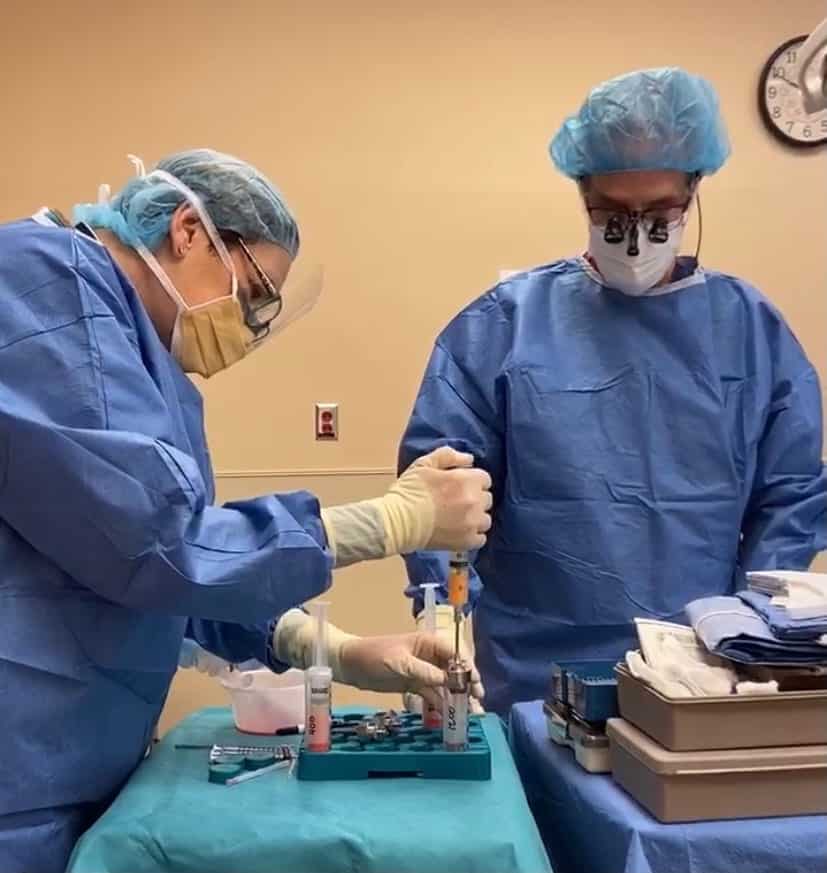
Facial Fat Transfer: The Ultimate Guide to Facial Liposculpture
In the more than 25 years I have been in practice, I have watched fat grafting (liposculpture) go from being something that everyone said didn’t work to being almost a staple in aesthetic surgery. In my practice, 99 percent of patients that undergo surgery such as blepharoplasty, brow lift, midface lift, and face lift undergo augmentation with fat, and we have done liposculpture on our patients for the past 15 years with great benefits.
Why do we perform Facial Fat Transfers?
The reasons for our use of liposculpture are simple: most facial plastic surgical procedures are designed to either remove bulges or tighten and tuck areas that are sagging. But there isn’t a face that we treat that doesn’t have an area of hollowing that creates a shadow, and this shadow would be served well with the addition of something to create more fullness.
Fillers like hyaluronic acid (Restylane®, JUVÉDERM®, etc.) can also be used, but the quantities of filler needed to improve these hollow areas often make the costs of the filler prohibitive. In contrast, fat is readily available in most of us and can be harvested in quantities useful enough to make a difference.
Fat, of course, is taken from you and put into you—so it is natural. Harvested fat contains more than just fat cells—it contains capillaries, stem cells, and various growth factors that act as nutrients. In addition to acting as a space expander and shadow concealer, fat appears to have a rejuvenating effect on skin, wrinkles, and scars.
What is a Facial Fat Transfer & what problems can it address?
What’s new and most exciting about fat in my practice, and relatively unique to our practice, is that we can now segment the fat into various sizes to be used in different areas and for different purposes. We are utilizing the Hogue Prism Particle Sizer, a device that breaks the fat up into sizes from 2.5 mm to 200 microns, each with a different benefit and each utilized for a different purpose.
Larger packets of fat can be utilized to build up various areas like the cheek and marionette areas. Larger packets can also be used to build up the chin. These packets are approximately 1 to 1.5 mm in size.
Smaller particulate fat can be used around the eyes and lids, and the small sizes tend to prevent the formation of clumps and bumps. With the ingenious system that Dr. Hogue developed, parcels as small as 200-micron fat can be centrifuged, concentrated, and, in our practice, used to help regenerate lost tissue, atrophic tissue, and scars. These smaller parcels can be made into a cocktail called stromal vascular fraction gel, which has regenerative benefits and, in some studies, has been shown to help in the management of hair loss. We are one of only three practices in the US to have this system, and it revolutionizes the dimensionalization of fat.
Stromal vascular fraction gel, or SVF can easily be made with the Prism Particle Sizer. Sized fat is centrifuged and then mechanically shifted between two syringes to create a gel. The gel can be injected into deep under eye grooves and into areas of loose upper eyelid skin and produces improvement much more reliably without creating lumps or sausages. We use 300 micron fat to rejuvenate the eyes and often combine it with SVF.
Nanofat, a term coined by several doctors in Belgium, can be injected with very fine needles into the skin and stimulates the dermis to improve its thickness, collagen content, and texture, elasticity. Nanofat treated skin has been shown in a study to have more firmness, hydration, and better glow and texture such that less or no makeup needs to be worn—and we are seeing these improvements in our patients with our ability to size the fat and utilize the right size particles for the right job.
Liposculpture using the Prism Particle Sizer system allows me to selectively restore areas and to provide visible benefits, and we now offer it to patients looking for the benefit of a filler that is natural and long lasting. It can be done in the office or the operating room and, even though it is placed deeply, it is also a skin treatment that improves the vibrancy and texture of the skin.
Are there any potential downsides of Facial Liposculpture?
One of the reasons that surgeons avoided performing facial fat transfer, especially around the eyes, was due to the occurrence of irregular absorption and, especially, the occurrence of lumps or sausages where fat would remain and proliferate irregularly. Fat is a living graft, and if only part of these large cells survived, it created unnatural hills and valleys. These lumps are difficult to remove other than with additional surgery. Surgeons would inject steroid into the lumps to try to dissolve the fat which often lead to irregular depressions—a worsening of the valleys– which only worsened the situation.
In order to avoid this issue, we use the Prism Particle Sizer to create precise packets of less than .3 mm in size. That fat seems to survive uniformly, and without producing these lumps.
Does fat migrate? I am asked this all the time. If the small parcels of fat are deposited in tissue, say, muscle, and adjacent to anatomic structures in small amounts (.03 cc), they become embedded in the tissue and become integrated into the surrounding tissue as a graft, or they are taken care of by the body which may not accept the graft based on various conditions (smoking, general health). If the fat is just stuffed in as a liquid, it can migrate or cause inflammation, lumps, and oil cysts.
Ironically, the biggest downside to fat is its permanence. Fat integrates into the body in its new locations. If your weight fluctuates and you gain a substantial amount of weight, the fat transplanted by liposculpture may also grow. Some faces get unnaturally full in these circumstances. If you lose weight, the benefits of fat may no longer be visible.
For this reason, liposculpture is best performed in patients that can maintain their weight at approximately the same point that it was when they first underwent the procedure.
What will recovery look like after my surgery?
Downtime associated with liposculpture alone is minimal. The procedure can be done awake or asleep or with minimal sedation. We numb the face and take fat from an area where it is troublesome, size it, and place it in areas where it is deficient. Bruising is possible, but many patients are back to work a day or two after the procedure.
Interested in learning more about Facial Liposculpture?
If you would like to learn more about facial fat transfer or other facial surgeries, contact Dr. Wulc (a quadruple certified plastic and cosmetic surgeon) at W Cosmetic Surgery by calling (267) 609-9121 or filling out our online contact form.

